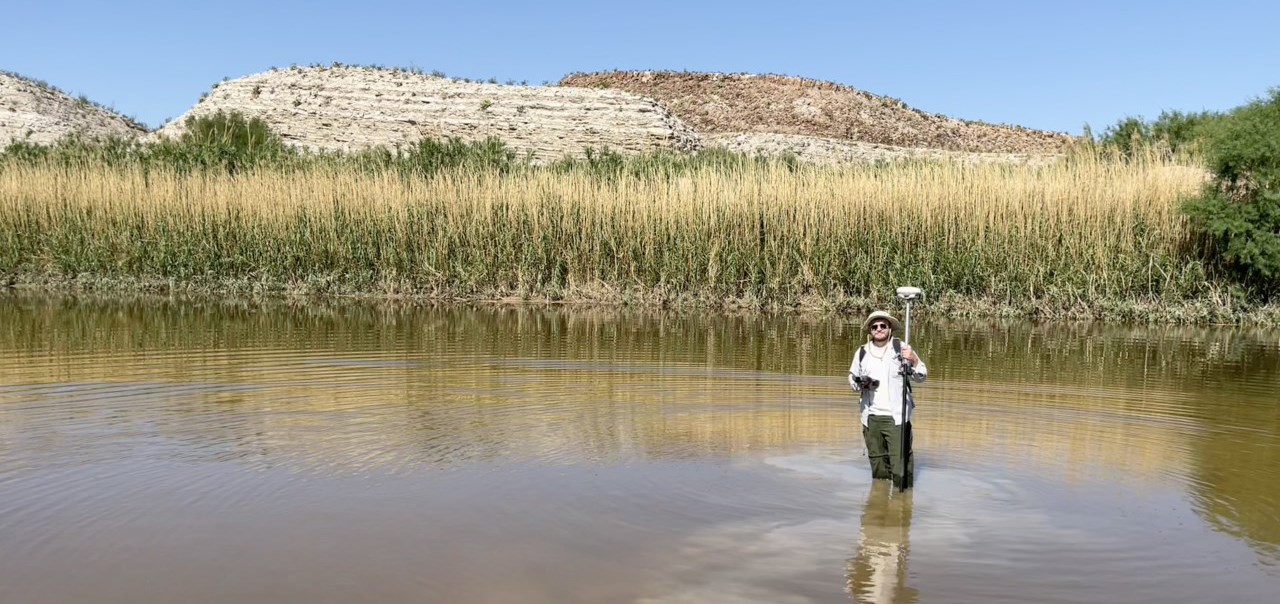Last updated: August 8, 2022
Article
IVIP Spotlight: Josh Richards

Interns and volunteers play a variety of essential roles at the Sonoran Desert Network and Desert Research Learning Center. Over the years, we have welcomed many international volunteers through the National Park Service's International Volunteers in Parks (IVIP) program. Our IVIPs gain field experience and complete independent projects to fulfill academic requirements. On-site housing and travel stipends may be available. Have a skill to share? Visit our website for more information.
Where are you from?
I’m from Dunfermline, Scotland—a city just outside Edinburgh. I grew up there and have lived there all my life. There is an interesting link between Dunfermline and Tucson. Dunfermline is the birthplace of Andrew Carnegie, who helped establish the Desert Botanical Laboratory in Tucson in 1903. In honour of this support, the scientific name of the saguaro cactus was renamed after Carnegie: Carnegiea gigantea.
Are you currently a student? Which degree are you working toward?
I’m currently working toward my PhD at the University of Dundee. I have a background in Immunology and Infectious Diseases. My PhD focuses on how parasites and the immune system interact with each other, and how understanding interactions between host and parasite might provide therapies for immune-mediated disease.
How long were you with SODN, and what was the nature of the work you were doing?
I worked with SODN from March to June 2022. I worked and stayed at the learning centre, although 50% of my time was spent in the field. I loved living at the learning centre, being close to both the mountains and the amenities within Tucson. Tucson is a great city and I’m excited to return some day.
My project aimed to establish a protocol for the collection of environmental DNA in SODN springs. The goal was to attempt to confirm the presence of elusive wildlife (e.g., jaguars) and also monitor diseases (e.g., chytrid fungus, ranavirus) that threaten native species of the Sonoran Desert. I also helped with vegetation mapping, deploying and retrieving wildlife cameras, monitoring water quality, surveying the Rio Grande on a three-week river trip, and saving endangered turtles at Quitobaquito Pond. Through this internship, I was able to learn a number of new skills, gain an appreciation for unfamiliar disciplines, collaborate with fantastic scientists from other fields, and see some incredible parts of the United States.
What do you like to do outside of school/work?
Outside of work, I like to spend time with my wife, my friends and my family.
What appealed to you about SODN’s IVIP position?
I was drawn to SODN after searching for internships within the National Park Service. I was hoping to work within an NPS unit, but when I heard about SODN, I realised I’d have the opportunity to work in more than just one park. I was excited by all of the different resources which SODN monitored and was looking for the most diverse experience possible. After having a chat with employees at the DRLC, I was sold on SODN and couldn’t wait to get started. I should also add that from conversations with SODN employees I was overwhelmed with how nice the staff were, how invested they were in what projects would interest me, and how much time they dedicated to speaking with me in the run up to the internship beginning.
